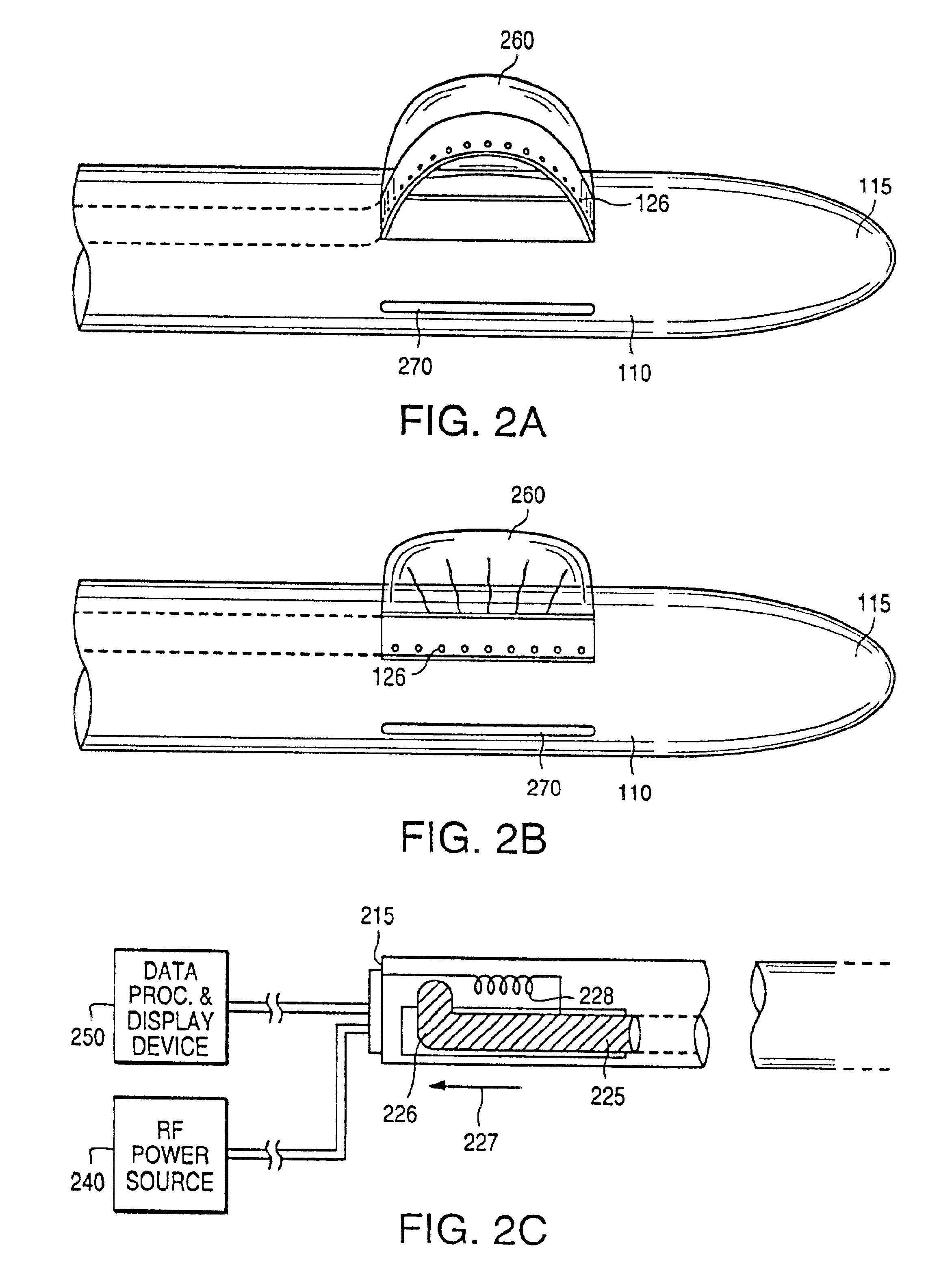Excisional biopsy devices and methods
a biopsy device and excision technology, applied in the field of excisional biopsy devices and methods, can solve the problems of affecting the accuracy of biopsy results, and affecting the accuracy of mammography results, so as to minimize the size of the incision, minimize the complications of ecchymosis, hematoma formation, and breast edema, and efficiently and safely excise suspicious lesions.
- Summary
- Abstract
- Description
- Claims
- Application Information
AI Technical Summary
Benefits of technology
Problems solved by technology
Method used
Image
Examples
Embodiment Construction
FIGS. 1A, 1B and 1C show an embodiment of the distal region 105 of the excisional biopsy device 100 according to the present invention. Considering FIGS. 1A, 1B and 1C collectively, the distal region 105 of the excisional biopsy device 100 includes a generally tubular member 110 having a generally tapered distal tip 115. The distal tip 115 is configured to penetrate soft tissue, such as breast tissue, lung tissue, liver tissue and the like. Preferably, therefore, the distal tip 115 and the distal region 105 of the excisional biopsy device 100 present a smooth, and relatively a traumatic profile to the soft tissue in which it is designed to penetrate. Alternatively, the tip 115 may be sharply pointed and / or may include an energy source (not shown) to facilitate cutting through the tissue. The tubular member 110 may be formed of rigid and hard plastic, or may be made of stainless steel, for example. Preferably, the tubular member 100 is used once and disposed of, for both safety and f...
PUM
 Login to View More
Login to View More Abstract
Description
Claims
Application Information
 Login to View More
Login to View More - R&D
- Intellectual Property
- Life Sciences
- Materials
- Tech Scout
- Unparalleled Data Quality
- Higher Quality Content
- 60% Fewer Hallucinations
Browse by: Latest US Patents, China's latest patents, Technical Efficacy Thesaurus, Application Domain, Technology Topic, Popular Technical Reports.
© 2025 PatSnap. All rights reserved.Legal|Privacy policy|Modern Slavery Act Transparency Statement|Sitemap|About US| Contact US: help@patsnap.com



